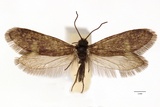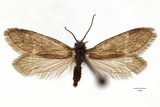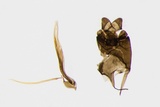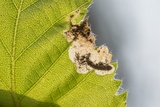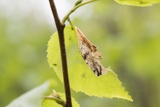Eriocrania sangii (Wood, 1891) Species
Last modified: Dec. 20, 2025, 1:31 p.m.
In Belgium, this species was first observed in 1986. Nowadays, the species can be observed throughout the country, but it remains relatively uncommon.
Details
- Classification
- Family: Eriocraniidae > Genus: Eriocrania > Species: Eriocrania sangii
- Vernacular names
- Grijsrupspurpermot (NL), Large Birch Purple (EN), Große Birken-Purpurmotte (DE)
- First mention in Belgium
- Van de Meutter F. & Steeman C. 2010. Eriocrania sangii, new for the Belgian fauna (Lepidoptera: Eriocraniidae). — Phegea 38(4): 121–124. On page 121 (as Eriocrania sangii (Wood, 1891)). view page
- Status
-
Native
Note: In 2025, it came to light that a genital preparation of an Eriocraniidae species from Ekeren (AN) from 1986, from an old collection of L. De Ridder, was identified as E. sangii, providing the first proven evidence of the occurrence of this species in Belgium.
Distribution
Imago
Wingspan 9–13 mm. Eriocrania sangii and Eriocrania semipurpurella are very similar and are difficult to distinguish from each other, genitalization is necessary to achieve species ID.
Caterpillar
The young larva is light grey but it gets a distinctive dark lead-grey colouration on ageing.
Mine
The mine starts near a leaf margin with a short corridor and expands later on into a large, dirt-white blotch mine that continues in the direction of the main vein or even crosses it.
See also bladmineerders.be
Cocoon/pupa
The pupation takes place in a tough silken cocoon.
Bionomics
The egg is laid fairly close to the leaf edge. Therefore, the larva starts its mine also near a leaf margin with a short corridor and expands it later on into a large, dirt-white blotch mine that continues in the direction of the main vein or even crosses it. In the blotch mine, the frass lies in long black threads. Mature larvae leave the mine and pupate in a tough silken cocoon in the soil.
The imagines can be observed resting on the twigs and leaves of the food plant or flying around these trees in the sunshine. At night, they occasionally come to light.
Flight periods
The adults fly from mid-March till late April or the beginning of May.
Observed on
- Host plant (species):
- Betula pubescens
- Host plant (genera):
- Betula
The larva feeds monophagously on Betula spp.
